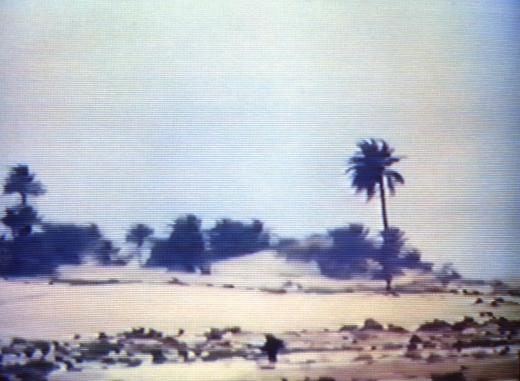CHOTT EL-DJERID (A PORTRAIT IN LIGHT AND HEAT)
Chott el-Djerid is the name of a vast, dry salt lake in the Tunisian Sahara Desert, where mirages are most likely to form in the midday sun. Here the intense desert heat manipulates, bends, and distorts the light rays to such an extent that you actually see things that are not there. Trees and sand dunes float off the ground, the edges of mountains and buildings ripple and vibrate, color and form blend into one shimmering dance. The desert mirages are set against images of the bleak winter prairies of Illinois and Saskatchewan, Canada, some of them recorded in a snowstorm. The opposite climactic conditions induce a similar aura of uncertainty, disorientation, and unfamiliarity.
Through special telephoto lenses adapted for video, the camera confronts the final barrier of the limits of the image, the point when the breakdown of normal conditions, or the lack of visual information, causes us to reevaluate our perceptions of reality and realize that we are looking at something out of the ordinary—a transformation of the physical into the psychological. If one believes that hallucinations are the manifestation of some chemical or biological imbalance in the brain, then mirages and desert heat distortions can be considered hallucinations of the landscape. It was like physically being inside someone else’s dream.

